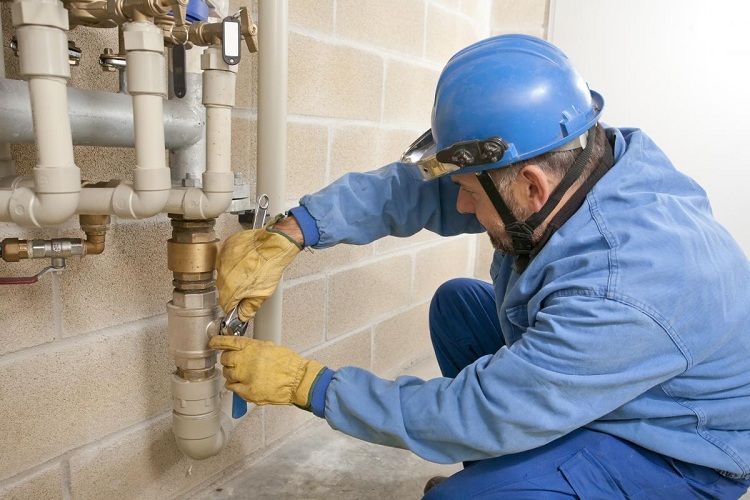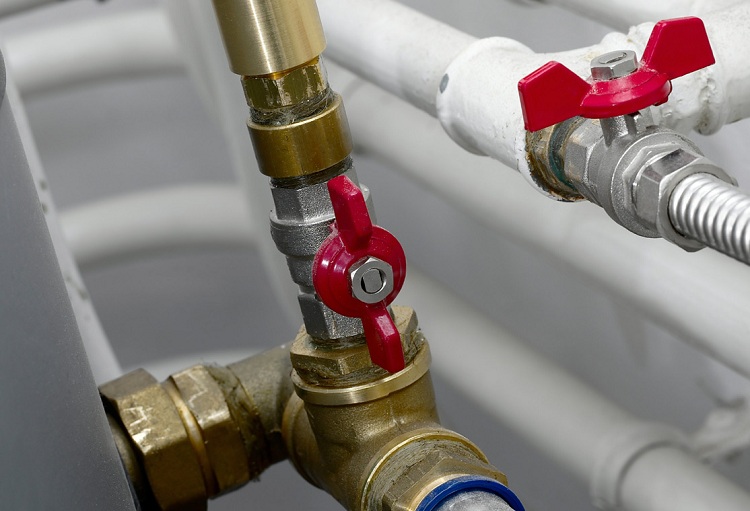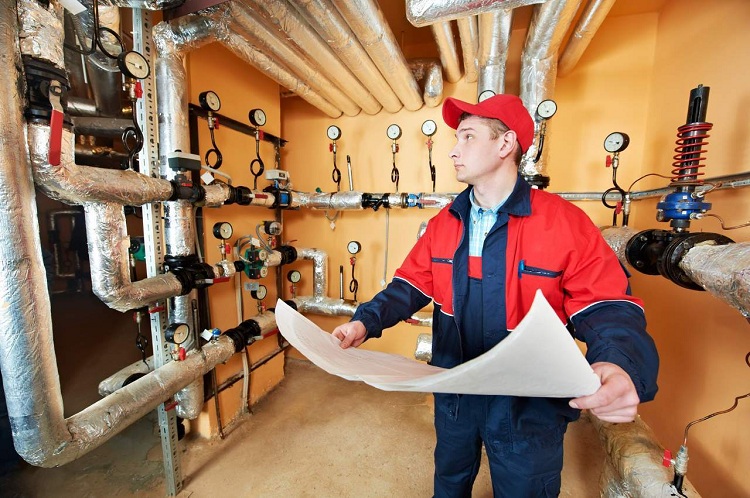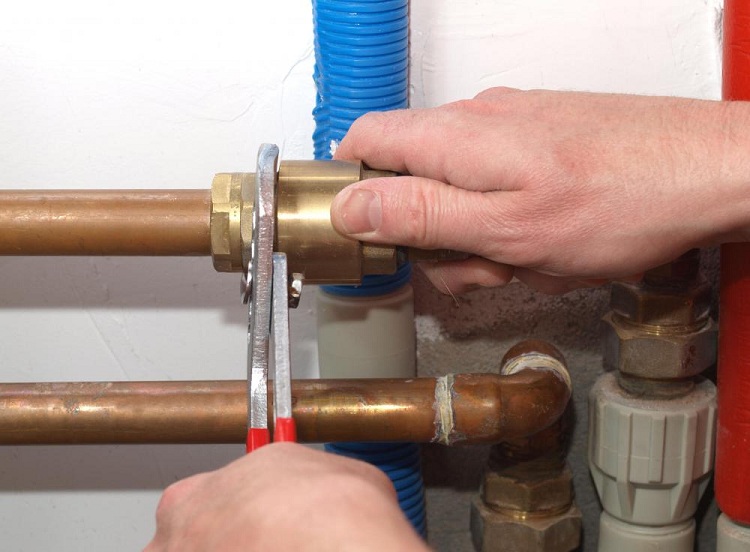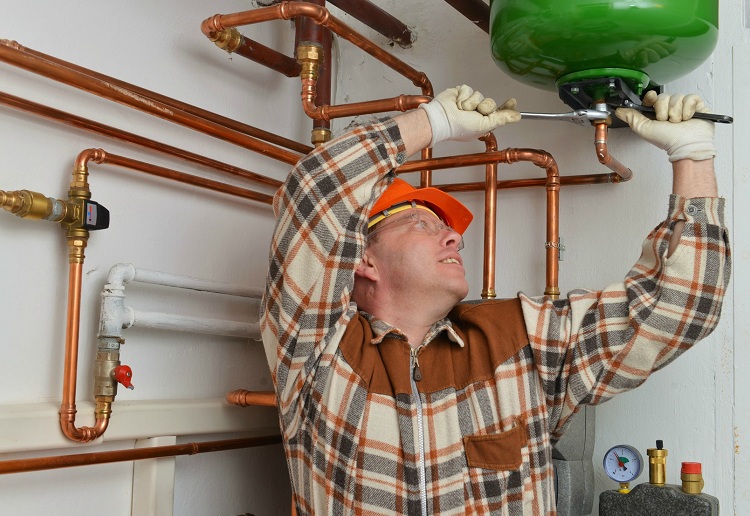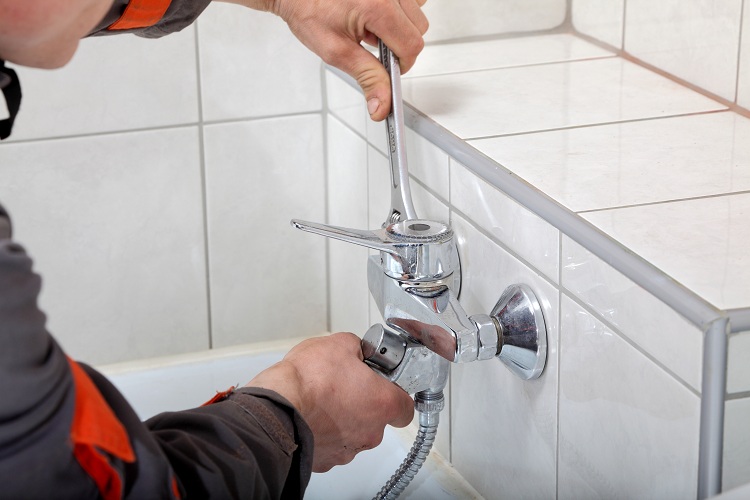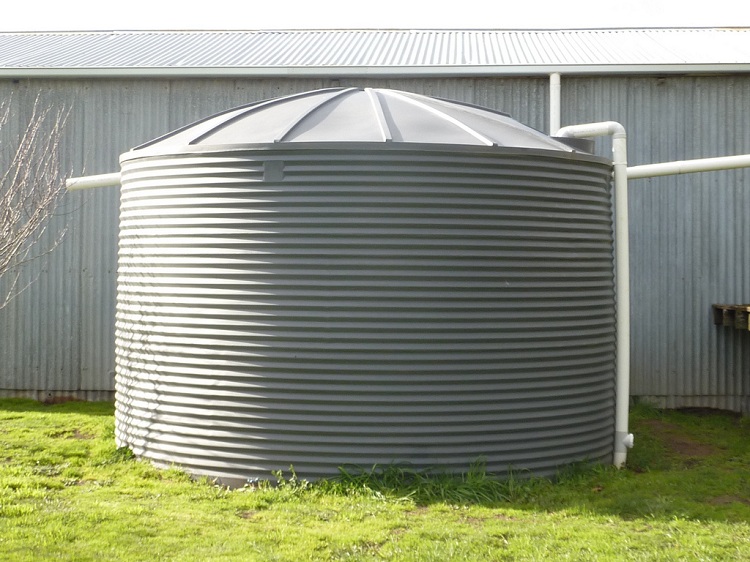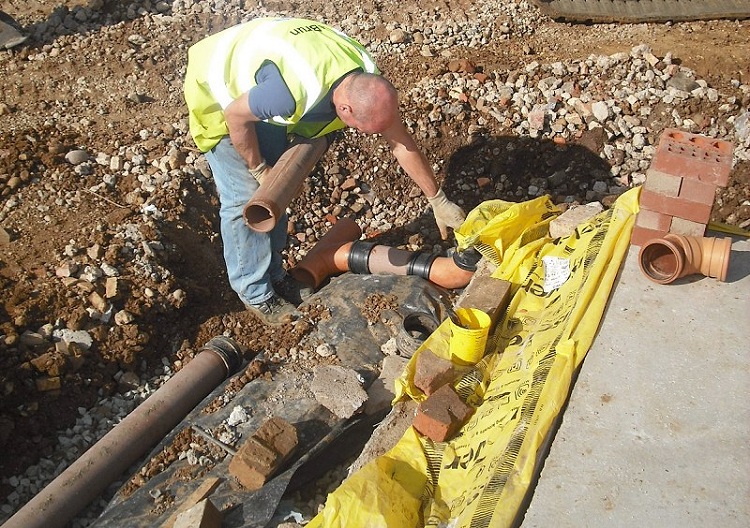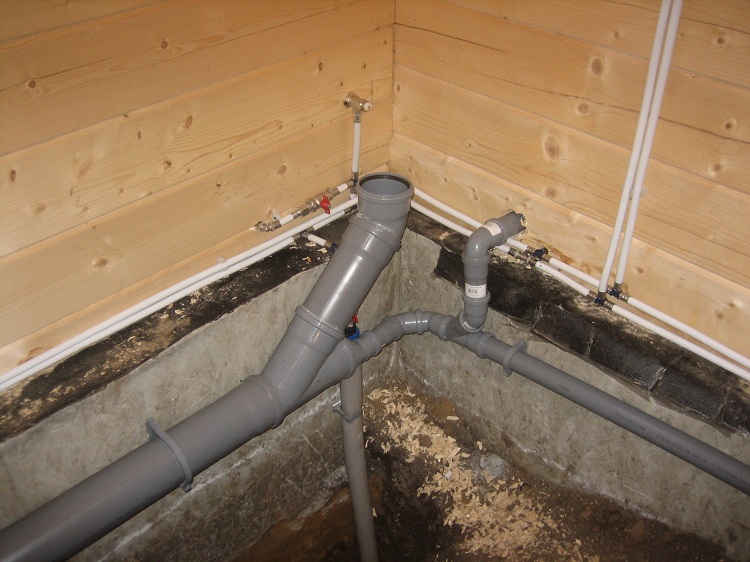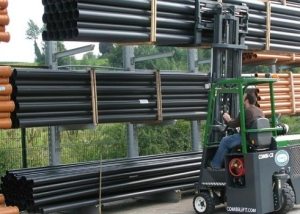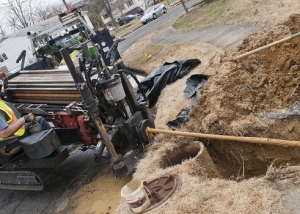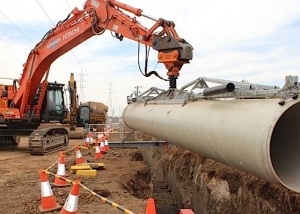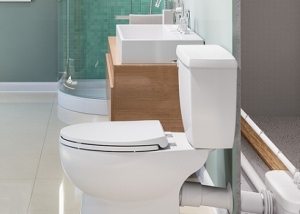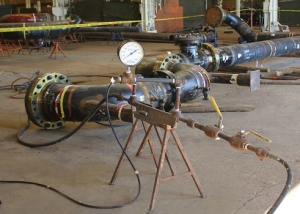Construction Norms and Regulations (construction norms and rules) for internal water supply and sewerage of buildings is a document containing all the necessary rules for the installation and operation of water supply systems in residential facilities and industrial enterprises. He also indicates what technical characteristics must have components for the installation of such networks.
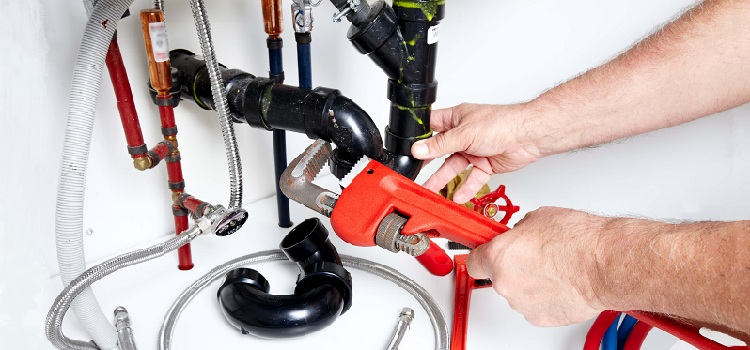
Design and installation of sewer and water systems should be carried out in accordance with building codes and rules
Content
- 1 Key Points
- 2 Indicators and characteristics of transported water
- 3 Cold water pipes
- 4 Hot water pipes
- 5 Networks of internal (cold) water supply systems
- 6 Pipelines and special fittings
- 7 Measuring instruments
- 8 Pump designs
- 9 Spare tanks
- 10 Sewerage and requirements for this system
- 11 Additional Information
Key Points
According to paragraph 1.1 of SNiP - all types of water supply and sewer networks are subject to these rules.
Internal water supply is a construction made of pipes and devices that produces and regulates the supply of water through pipes to plumbing fixtures. It provides a continuous supply of water to one or several buildings and has a common water metering device.
External water supply - passes (as opposed to internal) outside buildings.
Internal sewerage - a set of pipes and specialized devices that transport wastewater and rainwater from plumbing fixtures to an external network.
According to SNiP, water supply and sewerage systems must be present in buildings of any type: residential buildings with different numbers of storeys, production workshops, public facilities for various purposes (if these buildings are within the scope of servicing sewer systems). Areas that are located outside service areas can be equipped with backlash closets and cesspools. There are some restrictions on this subject, which can be found in paragraph 1.6 of the joint venture (set of rules) “internal water supply and sewerage”.
In addition, pipes, as well as special equipment and materials that are used in the construction and repair of water supply and sewer structures, must comply with all norms and state standards.
Indicators and characteristics of transported water
Water quality is a very important parameter, because, first of all, people's health depends on it. Therefore, this point should not be neglected in any case. Water properties must meet the necessary parameters according to GOST 2874–82 *. The water used in production for technical purposes is “subject to” special technological requirements that are different from domestic needs, but they should not be ignored.
The temperature indicators of hot water supplied for various purposes to residential buildings should not be lower than 60 ° C in water pipelines that are connected to an open heat supply complex. For water pipelines with enclosed structures, this norm is not lower than 50 ° C, and also not higher than 75 ° C in both of the above cases.
In buildings that are equipped as kindergartens, the temperature of hot water for sanitary purposes should not be higher than 37 ° C.
Important! Calculations in water supply systems and sewerage drainage networks should be carried out taking into account the number of users in order to meet the needs of each consumer.
Cold water pipes
According to paragraph 4.1 of SNiP, the internal water supply structures located in residential buildings at enterprises (this includes fire protection systems) must consist of:
- parts of the building;
- special water measuring units;
- a breeding system depending on the type of building;
- risers;
- fittings of various types, etc.
In addition, according to SNiP, external water pipes must be laid outside the premises and meet the necessary standards and technical characteristics. For protection, such pipelines must be equipped with insulation. In some cases, pumping facilities and spare tanks must be included in the internal piping system.
The choice of water supply and its components is an important point and is made strictly according to technical and sanitary standards.
Clause 4.4 includes the provision that the functional parts of the pipeline system must comply with all standards and technical specifications, and must be resistant to corrosion and salt deposits, so that the equipment and piping components do not fail after short periods of operation. In addition, the pipelines are subject to inspections, preventive examinations and necessary repair measures, depending on the condition.
As a rule, fire water supply is recommended to be combined with drinking or production systems, if the type of building allows this.
Important! The combination of household, residential water pipes with production is strictly prohibited.
When designing cold-type pipelines, it is very important to consider noise indicators. This is especially true for residential facilities.
Hot water pipes
Residential buildings must have central water supply systems. The volumes of water supplied to them must meet all the necessary conditions. It is forbidden to connect hot water supply systems transporting drinking water with piping systems that supply water for factory and other production purposes.
In residential complexes (according to clause 5.7), the height of which exceeds 4 floors, it is necessary to connect groups of risers into nodes, connecting them to a prefabricated pipeline. 3 to 7 risers cooperate in sectional units.
Note! At the enterprises it is allowed to provide hot water for technical and drinking needs at the same time, if this does not contradict the technical conditions.
In buildings with a building height of less than 4 floors, the connection of water-lifting devices to risers and pipelines is prohibited (paragraph 5.9). In villages and towns, the installation of water pipelines should be carried out taking into account the peculiarities of the region and economic opportunities, as well as technical procedures.
Domestic hot water pipelines
Water mains that transport hot water or, in some cases, steam should be installed in compliance with all technical standards.
Following paragraph 9.15, appliances that discharge air must be installed in the upper parts of hot-type water pipes. And also the air release can be carried out by water folding devices. In the lower parts of the systems, as a rule, drainage devices are installed.If a water-folding device is installed in the lower part of the pipeline, then drainage equipment is not required. Thermal insulation of such pipes is carried out for various types of highways. Risers should also be placed with insulation in mind. Its layer should not be less than 10 mm.
Networks of internal (cold) water supply systems
There are dead ends and ring water systems. In dead ends it is allowed to temporarily stop the supply of water. The number of fire installations in such water structures, respectively, with the necessary parameters, must be up to 12 (paragraph 9.1).
Ring systems must have two connections to the external network, if at least one of the points is observed: buildings with the number of fire systems above 12, residential structures with more than four hundred apartments, large clubs with a stage, cinemas with more than three hundred seats baths designed for two hundred or more visitors.
If the inlets connecting the water supply system to the external ring system are connected to different parts of the water supply system, then they must be equipped with all necessary equipment (valves, valves). Inputs must have access to different sections. Docking with the same site is a violation of the rules.
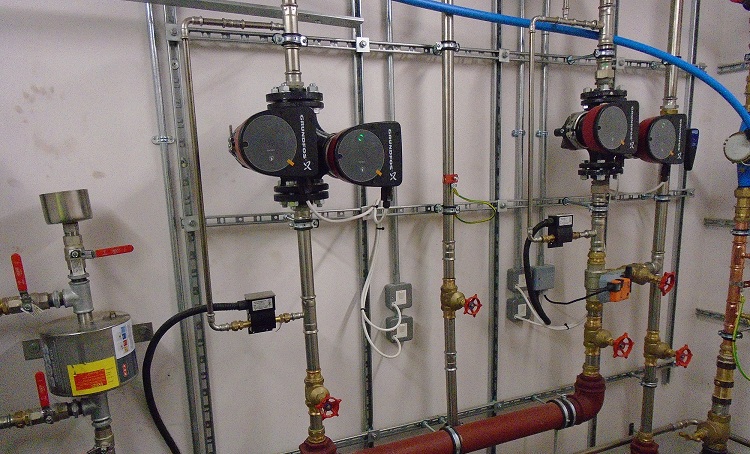
To ensure a normal pressure of water and its uninterrupted supply, the water supply system can be equipped with pumps
If you need to install a pump to increase the pressure and pressure of water in the pipeline, then it must be done taking into account all the required technical rules. The inlet of the pipeline system is connected in front of the pump with the installation of a special valve. Check valves are devices that regulate the flow of water transported through pipes.
Note! If the pipeline design is not equipped with measuring devices, then in such cases mounting valves is not necessary.
According to clause 9.5, the gaps between the drinking and sewage lines must comply with all technical parameters. According to the rules, these distances cannot be less than 1.5 m. The indent between the pipeline and other surfaces in the premises cannot be less than 0.2 m.
Installation of water mains, as a rule, is carried out in basements or on technical floors. If the building does not have a basement or attic, installation is carried out under the floor of the first floor, or under the ceiling of the upper floor of the building. Risers are laid in the mines. In buildings that have increased requirements for building codes, a hidden installation of water pipes can be used. Steel pipelines that are connected by threading must not be used with a hidden installation. Wall decoration after installation of pipelines is performed using plaster.
Collector system - in it all the necessary locking devices are located at the entrance to the apartment. A feature of such a system is that pipe branches for different needs come from a single system located in one place. It is allowed to apply such a scheme in residential premises.
According to paragraph 9.9 of SNiP, the installation of internal networks of water supply and sewage systems, which fall under the description of enterprises, must take place according to all necessary criteria of norms. The system must be installed openly. Pipes that supply process water to the devices may be laid under the floor.
It is impossible to place cold and hot pipelines close to each other without thermal insulation. Cold water pipes must be installed below hot water pipes. Also, when installing pipes, the angle of inclination and moisture condensation on their surfaces must be taken into account.
If the temperature in the room where the pipeline is located is lower than the required indicator of 2 ° C, then this should be taken into account.Being in a room with such a temperature, the pipes can freeze, so it is necessary to equip them with special insulation, which will prevent hypothermia.
Note! A gas or water guide structure located outside the building is called (according to the joint venture) an external pipeline and is divided into three categories according to its reliability.
Fire water supply
All calculations for the fire water supply system and the necessary criteria for water flow are indicated in the SNiP tables for internal water supply and sewage systems (see paragraph 6). Fire extinguishing systems in various types of buildings are mounted in compliance with all necessary procedures and safety precautions.
The indicator of the minimum waste of water in residential buildings is usually equal to 1.5 l / s, taking into account the costs of the fire extinguishing system. In production, water consumption in case of fire should be increased taking into account the volume of construction and its area (paragraph 6.3).
Pipelines and special fittings
For all types of pipelines, except for a separate fire protection system, pipes and fittings for them from various types of plastic are used. Internal pipelines can be made of bronze, brass, copper, and also steel with a corrosion-resistant layer. For production oriented to the field of agriculture, the asbestos-cement type can be used. It is advisable to install plastic parts in a hidden way. Pipes are allowed to open pipes openly. For pipelines that are operated for economic purposes, they mount pipe products from materials approved by the Ministry, taking into account all the necessary standards.
Requirements for pipes and their components:
In accordance with SNiP, water pipes made of materials that are subject to fire should be protected from unforeseen fires (paragraph 10.2).
Various types of valves for drinking water mains must be installed, taking into account all the necessary rules and safety precautions. The pressure indicator at which it acts should not be higher than 0.6 MPa. Parts that are part of fire protection systems may have different pressure indicators. It depends on the technological requirements for a particular case.
Water-folding fittings have a regulatory role in various types of pipelines. She "makes sure" that the flow of water flows through the pipe in the right direction.
Shut-off valves should be on each input, and also:
- on the ring distribution network of economic and technical water mains,
- on fire risers with a number of cranes of 5 or more, on branches that supply water to 5 or more points,
- on the inlets to the drain tanks, on the branches in each apartment,
- in front of specialized appliances.
Water flow regulators are installed on fittings that perform a water folding function. Water consumption should not be higher than indicated in the instructions.
Important! Permissible fluctuations in water flow in water supply structures ± 10% at a pressure of 0.1 MPa.
Pressure regulators are also provided for plumbing systems.
Fittings, in addition, include:
- mixers;
- gaskets;
- throttling diaphragms;
- various regulators.
All these types of devices are installed in accordance with technical standards.
Measuring instruments
For all types of water supply systems, installation of measuring instruments is required to calculate water costs and other indicators. Measuring devices include counters. They must have all the technical specifications according to the norms. Meters are usually installed on each input, regardless of the type of water supply system.Equipping counting devices for apartments, buildings, shops and other complexes is a necessary procedure.
Separate fire systems do not require the installation of measuring instruments.
Pump designs
According to clause 12.1 for the internal water supply joint venture - if the water pressure in the pipes is weaker than necessary, the water supply systems are equipped with pumping units. The type of such equipment is chosen, guided by technical and economic considerations for each case. Pumping structures in residential buildings are placed in boiler rooms or boiler rooms. Pumping equipment for enterprises is usually located directly in the workshops and is delimited from the rest of the area with protective fences.
Clause 12.21 narrates that pump structures that are used in fire-fighting equipment systems are designed with manual control or remote control. Pipes for pumping stations must be steel and connected by welding and flange parts.
Spare tanks
The amount of water in the reserve and control tanks (these are water towers, various tanks) should be sufficient to control the water supply process. In fire systems must also be the necessary capacity with a supply of water. Such tanks are equipped with special devices so that it would be impossible to spend stock for other purposes. The type of capacity is determined for each type of building according to the established standards of the technical regulation.
Important! Pipelines should be easily accessible for inspection and repair in the event of a breakdown. To do this, they should be mounted above the floor or basement level. Laying water mains below the foundation level is strictly prohibited.
When laying pipelines in areas with an increased risk of an earthquake or displacement of soil, special emergency tanks should be installed in case of fire. If the pipeline passes in frozen soil, all methods of necessary pipe protection should be applied to prevent their cracking and deformation. However, the underground laying of the pipeline in such conditions should be performed only if the above-ground installation of the pipeline is not possible.
Sewerage and requirements for this system
Internal sewer systems are usually divided into:
- Household. This sewage system discharges wastewater from various plumbing fixtures that are located in buildings intended for living.
- Production. For water withdrawal at enterprises of various kinds.
- United. It is a combination of the two above systems.
- Inland gutters. Needed to remove liquid atmospheric precipitation from the roofs of buildings.
In factories, it is possible to combine several types of sewage systems at once. Devices for hygienic purposes, as well as for the reception of waste that were received during the production process, must be equipped with hydraulic locks. This is a must. Equipping the sewer structures with all special devices must comply with the norms and procedures and be carried out in compliance with safety precautions.
Domestic sewage
According to SNiP - pipelines that perform the function of transporting wastewater from plumbing fixtures must be closed.
Note! An exception is possible for wastewater that does not emit toxic substances and does not have an unpleasant odor.With a certain technological need, enterprises of various types are allowed to use open pipeline structures that are equipped with hydraulic valves (if this is in accordance with existing standards).
As a rule, the components of the sewer lines are mounted rectilinearly. In order to change the shape of the general design of sewer systems, special connecting devices are used. The section of the branch pipe located in the horizontal direction is not subject to a change in slope.
In order to attach the outlet parts to the riser located in the basement or other room of a technical type, crosses and tees (containing four and three branches, respectively) are used. Attaching the outlet pipe from the bath to the riser should be carried out using oblique crosses. In the horizontal plane, crosses of the direct type are not allowed.
For sewer structures, pipes are provided that have certain technical characteristics: strength, resistance to corrosion, as well as economic profitability. For all these indicators, the following types of pipes are chosen:
- for structures with gravity drainage of liquid, pipes made of cast iron, asbestos-cement material, concrete, iron are used;
- pipes are suitable for pressure structures: pressure pipes made of cast iron, reinforced concrete, plastic, asbestos-cement.
Details with the help of which the individual components of the pipelines are joined together, it is necessary to apply observing the technical standards currently in force.
Types of installation of internal sewer systems
- open. With this type of sewer line passes: under the floor, in basements and other rooms of a technical orientation;
- hidden. This type involves the installation of special ceilings that hide the pipes. Such overlappings include: panels, grooves of walls (strobes), columns, etc.
With the necessary calculation of the working loads on the pipes, it is allowed to lay plastic products under the floor of the building.
Additional Information
The material for the manufacture of pipes that will be used in non-standard climatic conditions should be protected in every way with insulating devices. It is strictly forbidden to lay in one channel, (as stated in the joint venture), a water pipe intersecting with other sewer structures (the exception is the highway through which non-toxic substances are transported). In conditions with an extremely low temperature, sewer pipes should be secured and provided with thermal insulation material.
In places where the vertical position of the sewer pipe becomes horizontal, you should install stops for structural strength.
If there is a need to increase the temperature in the sewer line, this can be done by reducing the amount of fluid transported through it.
Sanitary norms and rules contain important information that must be followed when designing buildings. No structure can be put into operation if these norms and rules are not followed.
